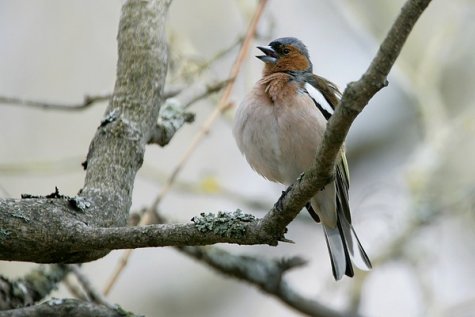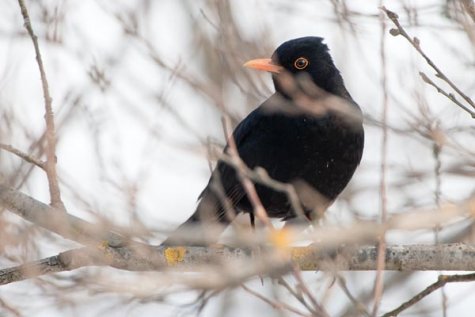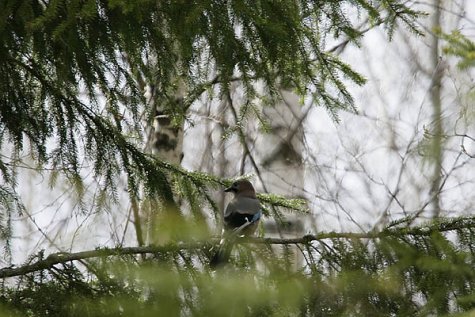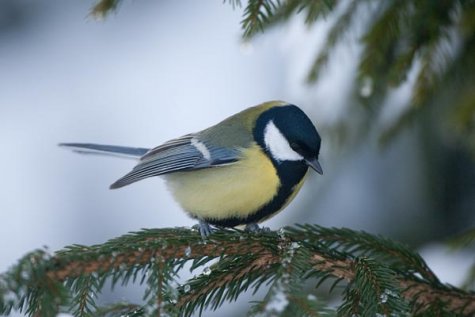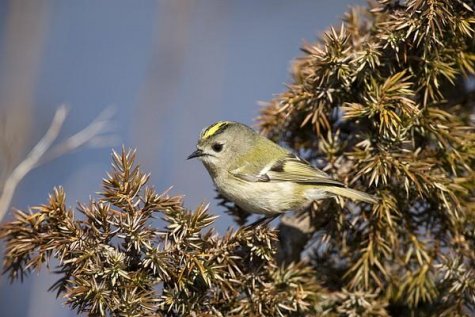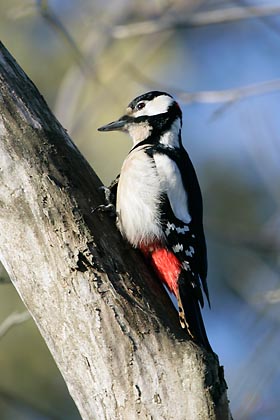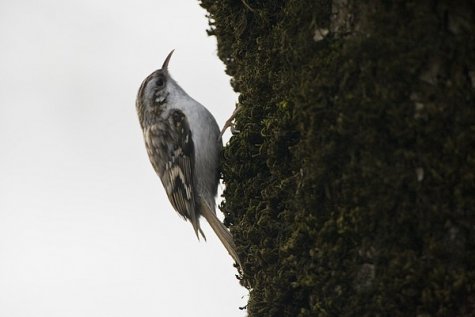Observations table and logic: Vello Keppart
Photos: Arne Ader
Translation: Liis
Our forests are brimming with bird song - there is indeed something to listen to. A series of simple everyday introductions of forest birds follows here, to make it easier to identify the birds by ear. You will be able to look the birds up on one single page, and compare them. The list of birds to be introduced is in the right-hand column in the table below.
In spring chaffinches arrive here at the end of March or beginning of April. We hear them singing from their arrival onwards until the second half of July. The chaffinch is the most numerous song bird in areas with stands of trees everywhere and it isn’t shy of humans. It starts singing 25-45 minutes before sunrise and stops already before sunset. The song of the chaffinch is a falling row of notes, very similar to the song of the willow warbler. The similarity is particularly great when the chaffinch omits the loud "tikk" call at the end of its song. The contact call (and also the warning call) is a loud metallic-sounding "pink", very similar to the contact call of the great tit. During the breeding period the male birds gently call "rüüt". The „vocabulary“ of chaffinches is quite large and the meaning of all their calls is not quite clear.
|
Most common forest birds:
Basis: spot monitoring survey in Kaarepere forest, 1984-1992) |
In how many spots á 5 minutes must you listen to hear the species?
|
How many times is the bird heard during 5 mins.?
|
LK presentation order (non-migrant* + migrant birds)
|
|
Chaffinch - Metsvint
|
1
|
2,2
|
Great tit*
|
|
Willow warbler - Salu-lehelind
|
2
|
0,8
|
Goldcrest*
|
|
Wood warbler - Mets-lehelind
|
2
|
0,8
|
Great spotted woodpecker*
|
|
Chiff-chaff - Väike-lehelind
|
2
|
0,8
|
Treecreeper*
|
|
Tree pipit - Metskiur
|
2
|
0,7
|
Jay*
|
|
Robin - Punarind
|
2
|
0,6
|
Blackbird
|
|
Song thrush - Laulurästas
|
2
|
0,5
|
Chaffinch
|
|
Blackcap - Mustpea-põõsalind
|
2
|
0,5
|
Wren
|
|
Pied flycatcher - Must-kärbsenäpp
|
3
|
0,4
|
Song thrush
|
|
Wren - Käblik
|
3
|
0,4
|
Robin
|
|
Cuckoo - Kägu
|
3
|
0,4
|
Chaffinch
|
|
Garden warbler - Aed-põõsalind
|
4
|
0,3
|
Redwing thrush
|
|
Great tit - Rasvatihane
|
4
|
0,3
|
Tree pipit
|
|
Blackbird - Musträstas
|
4
|
0,3
|
Chiff-chaff
|
|
Goldcrest - Pöialpoiss
|
4
|
0,3
|
Willow warbler
|
|
Redwing - Vainurästas
|
4
|
0,3
|
Pied flycatcher
|
|
Collared dove - Kaelustuvi
|
4
|
0,3
|
Cuckoo
|
|
Siskin - Siisike
|
5
|
0,2
|
Wood warbler
|
|
Willow tit - Põhjatihane
|
5
|
0,2
|
Blackcap
|
|
Dunnock - Võsaraat
|
5
|
0,2
|
Garden warbler
|
|
Greater spotted woodpecker - Suur-kirjurähn
|
5
|
0,2
|
|
|
Treecreeper - Porr
|
Observed each year
|
|
|
|
Bullfinch - Leevike
|
Observed each year
|
Spot monitoring
|
|
|
Jay - Pasknäär
|
Observed each year
|
20 obs. spots
|
|
|
|
|
á 5 minutes
|
|
We can hear the beautiful song of the blackbird from April to mid-July. In the morning it begins about one hour before sunrise, stops in the evenings 40-55 minutes after sunset. The blackbird nests in fresh deciduous forests and wetland forests, and sings sitting motionless in the top of the tree. The song is varied, slow and tranquil. It sounds similar to the song of the mistle thrush but the latter only nests in pine forests.
The jay is the policeman of the forest, warning both its own species and others of dangers by loud screeching. It is particularly noisy in the autumn when the acorns are ripening and it is busy with ”planting” nuts and acorns. During the nesting period it doesn’t reveal itself, even the song is quiet and doesn’t carry far. As a gifted imitator the jay manages to garnish its song with tens of different bird sounds, and not only their calls and song cadences.
Great tit
The great tit stays in Estonia during the whole year. As the first bird it opens the spring season with its song: already in January its rhythmic ”sawing” begins; towards spring changing into the typical gaily sounding song „tsitsifüü tsitsifüü ...“ („sitsikleit sitsikleit“). (from the book, ”Eesti laululinnud – Estonian songbirds” by Rootsmäe and Veroman pp 215-216). Some individuals can imitate other birds. The register of calls is similarly very varied. Up to 50 different calls have been noted for the great tit. In the morning the great tit begins singing up to one hour before sunrise and stops in the evening a little after sunset
Kõrv loodusesse - Listening to nature:
Great tit
Goldcrest
The goldcrest is the tiniest bird in Estonia and in Europe. It has a very thin voice. The song, reminding of a violin, is so high-pitched that older people cannot hear it. The goldcrest’s song can be heard in CONIFEROUS and MIXED FORESTS. It usually keeps to the crowns of high spruces. In the mornings it begins singing 30-50 minutes before sunrise, in the evening it stops already some time before sunset. The last ones singing can be heard in the second half of July or in August, even in September in exceptional cases. The call resembles the corresponding call of tits.
Kõrv loodusesse, Listening to nature: Goldcrest
Great spotted woodpecker
Great spotted woodpecker
|
Suur-kirjurähn |
|
|
|
|
The great spotted woodpecker is our most frequently heard and encounteret woodpecker. It often reveals its presence with a sharp "kik" call. The drumming is generally brief and rapid, with 6-7 taps. For nesting it chooses deciduous trees but it is not very particular with regard to habitat. As a supportive species the woodpeckers create nest hollows for other hollow nesters in forests.
The treecreeper is a brown-speckled little bird that moves in a spiral up along a tree trunk searching for insects in crevices in the tree bark with its slightly downwards-bent beak. It isn’t particularly shy of people. Its call is a high-pitched fine whistle. The song starts with 2 or 3 thin „tsii-s“, goes on with a twittering "row of pearls“ on a falling pitch, at the end there is always a whistle-like "tsüihh“. You can hear the song already in January, and it sings regularly from the middle of March until the end of April. Habitat is spruce forests and mixed forests with spruces.

